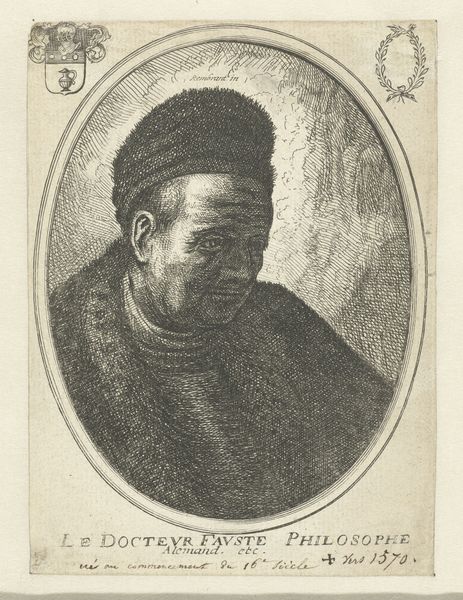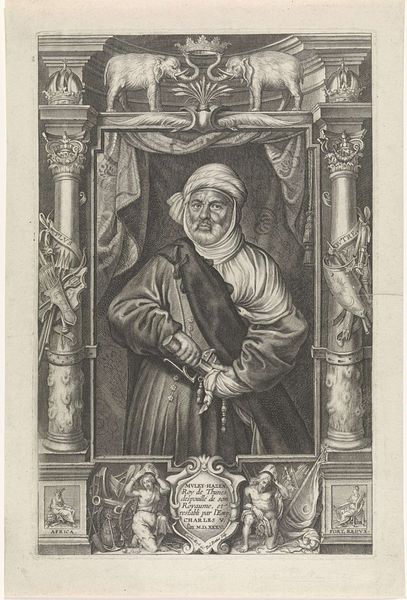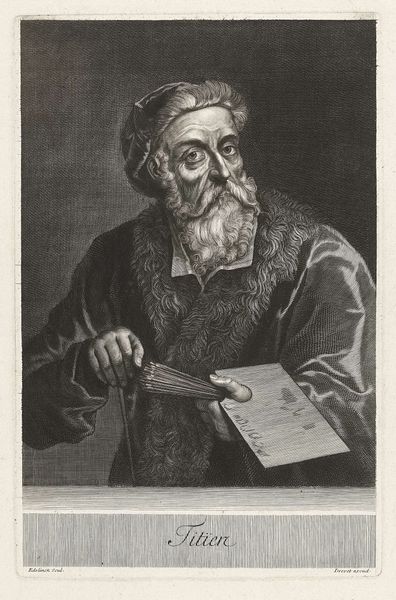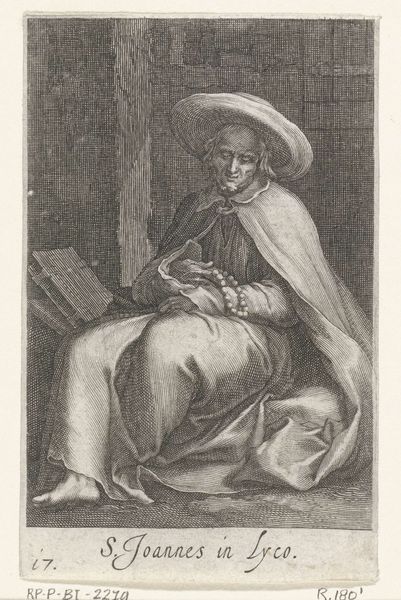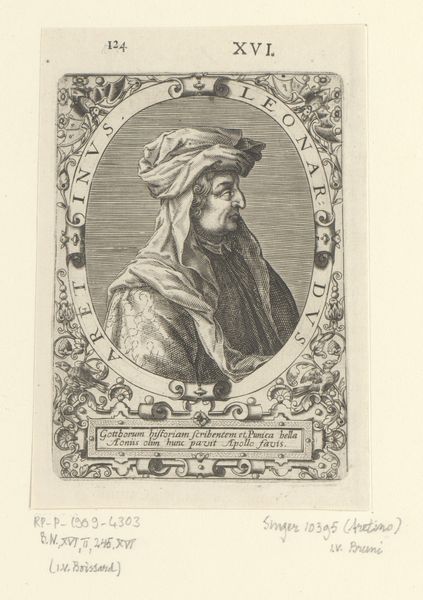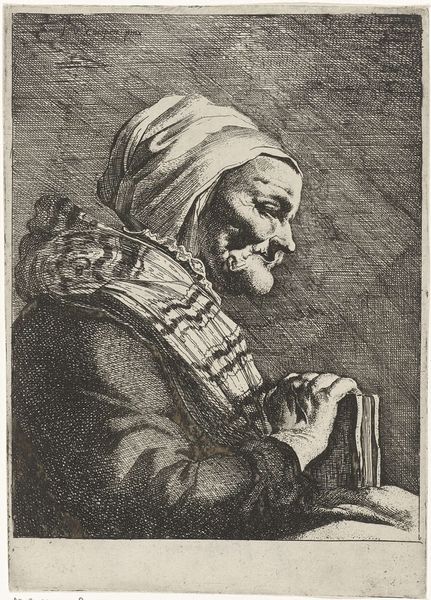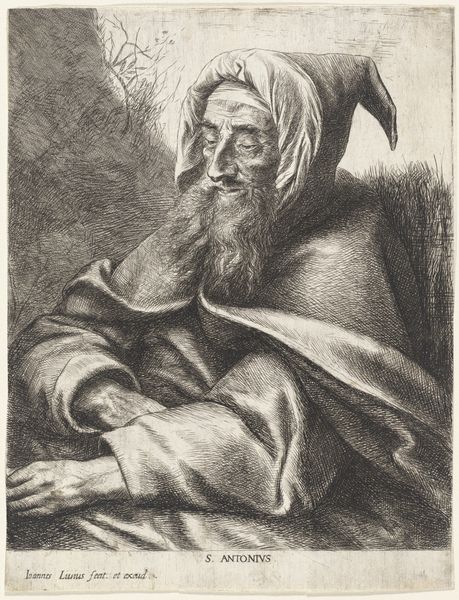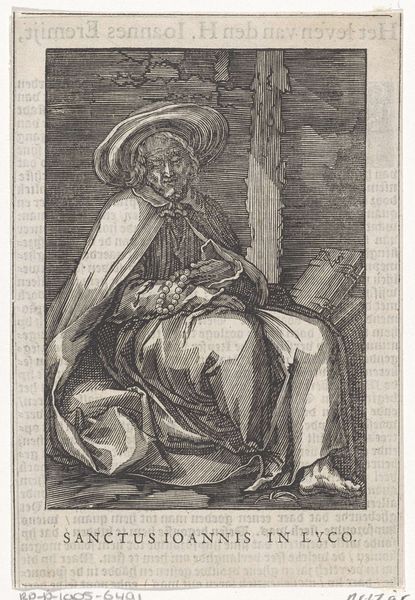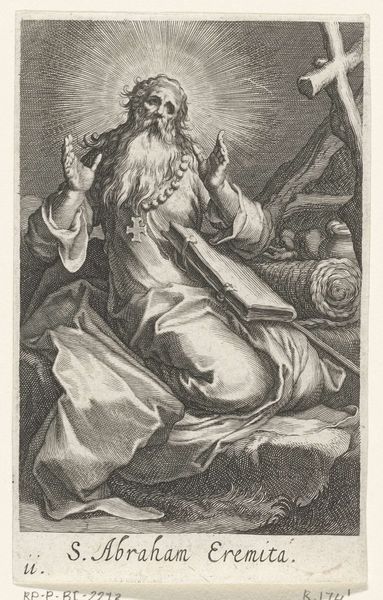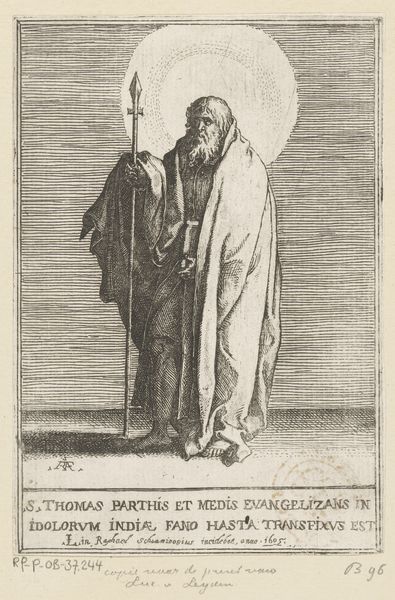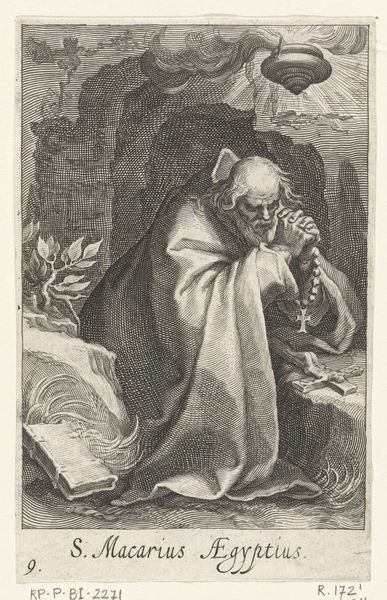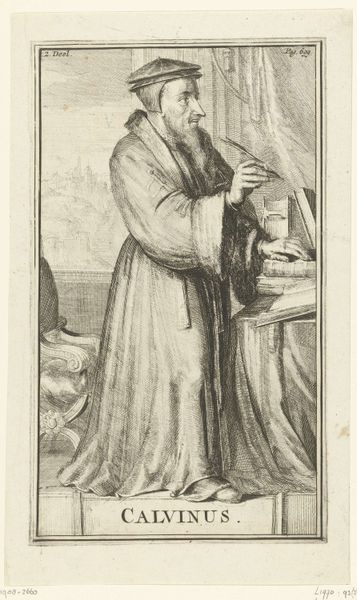
print, engraving
#
portrait
#
baroque
# print
#
old engraving style
#
genre-painting
#
engraving
#
realism
Dimensions: height 139 mm, width 105 mm
Copyright: Rijks Museum: Open Domain
Editor: So this print, "Monnik" by Jan van der Bruggen, created sometime between 1659 and 1740, depicts a monk holding what looks like a skull and a rosary. There's a somber feeling about it, almost melancholic. How do you read this work? Curator: It’s fascinating how van der Bruggen uses the medium of print to engage with ideas of mortality and faith that were circulating broadly in society during the Baroque period. The public role of art really took off at that time. Have you noticed how the artist subtly plays with shadow and light? Editor: Yes, the dark background contrasted with the lighter figure definitely emphasizes the monk and the objects he holds. Is there something specific about the depiction that reflects Baroque conventions? Curator: The Baroque, in its embrace of emotion and drama, frequently used religious figures to explore complex feelings. It prompts questions: Who was this monk? How did genre paintings interact with societal attitudes towards religious orders? The rosary and skull invite viewers to reflect on death and spiritual devotion. Editor: That makes a lot of sense. I hadn't really considered the piece in the broader context of Baroque art and its socio-political background. It seems so much more layered now! Curator: Precisely! Considering these broader frameworks encourages us to think about the different meanings and contexts that artworks operated within in order to have certain impact. Editor: Thanks so much, it really helped me think beyond the surface-level imagery! Curator: You’re most welcome. Exploring art through its historical environment is always insightful.
Comments
No comments
Be the first to comment and join the conversation on the ultimate creative platform.
